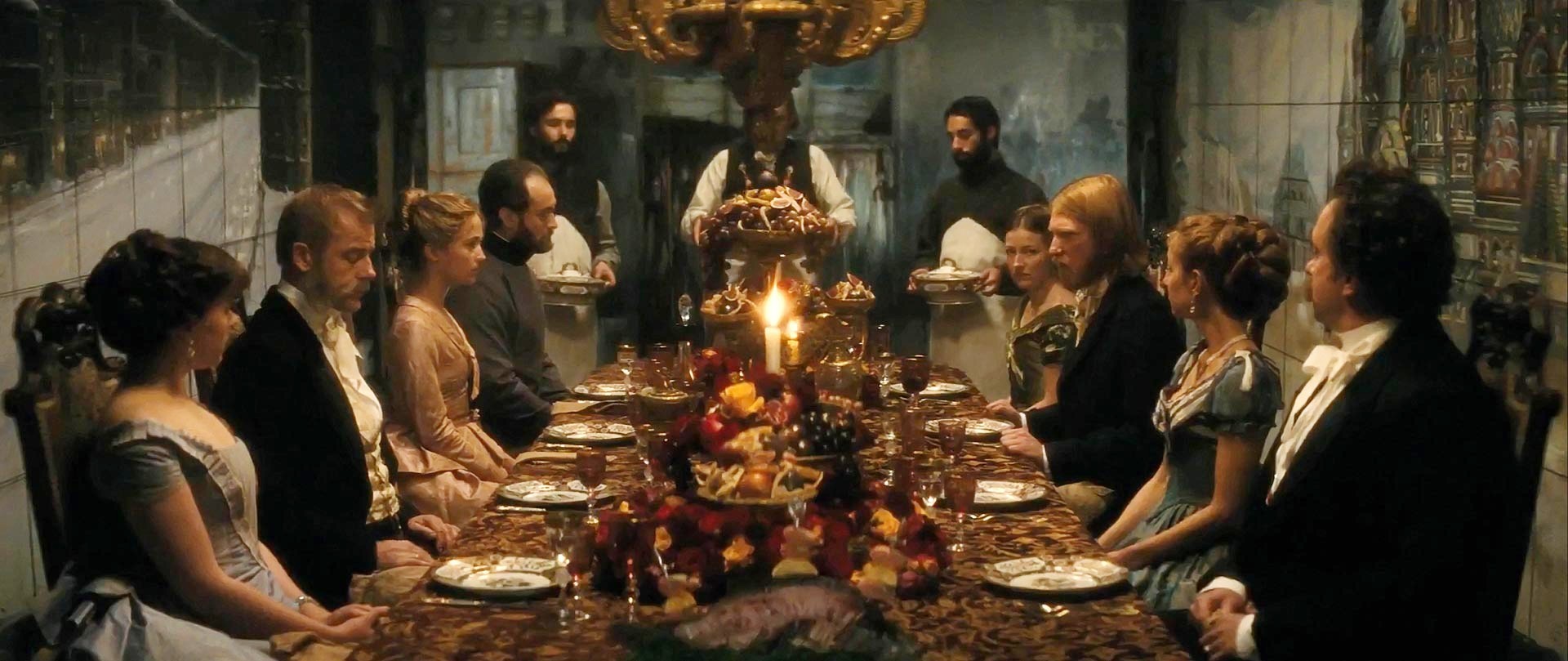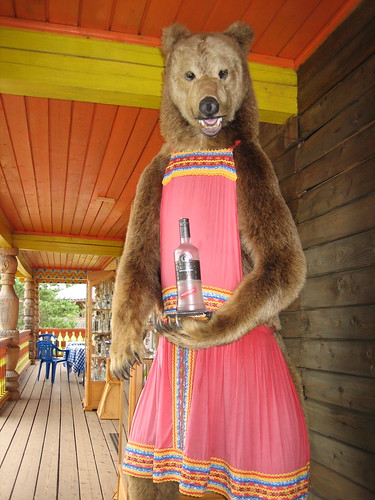Each week, culture intern Katherine will scour great works of literature for all the cheesy details your English teacher never showed you. Authors often include mentions of food and drink in their written works to give the reader a small glimpse into the culture and historic foodways of a particular place and era. This blog series will lend readers a helping hand and shed some light on the cheeses between the lines of the literary greats. Also, each week you’ll have a chance to win a special issue of culturemagazine.

Photo by Frisbee Book Journal
With his in-depth descriptions of social behaviors, European history, period dress, and–most excitingly–Russian foods and mealtime mannerisms, Tolstoy’s Anna Karenina is regarded as a perfect model of realist fiction. A fictional trend that began in the mid nineteenth-century, literary realism favored depictions of contemporary life and society rather than exaggerated or romanticized interpretations. Realism used descriptions of everyday life and experiences to create a new subgenre that gives wonderfully realistic portrayals of the time, place, and people about which it is written. While Anna Karenina is often wrongly portrayed as a romantic story, placed among the ranks of Austen’s Pride and Prejudice and Bronte’s Wuthering Heights, it is actually a haunting tale of jealousy, deceit, betrayal, and the dangerous complexities of elite society. That stuff is just too deep and much too dense, which is why most young readers cast this heavy tome aside, so we’d rather focus on another aspect of Tolstoy’s realism, the realism of cheese.

Photo by Ace Show Biz
So wrap up in your уша́нка and warm up with a few sips of водка as we explore the snow globe socialites of Tolstoy’s Anna Karenina… Split into eight different parts and set in the late nineteenth-century, Anna Kareninafollows the lives of several key characters including the titular protagonist, Anna Karenina; her Moscow socialite brother, Prince Stepan Oblonsky; his best friend and wealthy land owner, Kostya Levin; and a handful of suitors; lovers; spouses; and children. As we’ve said, there’s one too many beets in the borscht. But have no fear, we’ve skipped the complicated parts, bypassed poor Anna completely, and teased out the best of Tolstoy’s tasty realism cheeses.

Photo by Scenes of Eating
In the first part of the novel, Prince Oblonsky and his best friend Kostya Levin are taking lunch at a fancy restaurant somewhere in Moscow. While inherently good-hearted, Oblonsky is a man-about-town who prefers imported luxuries and lavish display. This becomes apparent as he discusses the cheese selection with the waiter,
”’Right, sir. Would you prefer your cheese?’ ‘Yes, the Parmesan. Unless you’d prefer something else?’ ‘No, it makes no difference to me,’ said Levin, unable to repress a smile.”
Oblonsky could have picked from a dozen different local Russian cheeses – all with fun names like Gornoaltaysky, Altaysky, and Tvorog – but instead he opts for the imported Parmesan from nearly 2000 miles away. During this time period, Russia experienced a great transformation, including several industrial expansions, economic reforms, and great social liberation. The social boundaries were quickly blurring and an aristocratic population attempted to reiterate their social standing through displays of wealth and conspicuous consumption.

Photos by Zenam and Schuchin Cheese
While local cheeses like sheep’s milk bryndza or fresh quark were widely available throughout the great country, they were considered lower foods and reserved for the lower classes. Imported cheeses, like Italian Parmesan, paired perfectly with expensive imported oysters, providing an opportunity for pomp and circumstance. But where Oblonsky prefers splendor, Levin likes simplicity.
“Levin ate the oysters, though white bread and cheese would have been more to his liking. But he admired Oblonsky. Even the Tartar, drawing the cork and pouring the sparkling wine into shallow thin glasses, then straightening his white tie, kept glancing with a noticeable smile of pleasure at Stepan Arkadyich.”
How these two men ever became friends is beyond us, but at least they seem to bond over good cheese. In the fourth part of the novel, Oblonsky and Levin attend a party with a lavish buffet,
”The men went to the dining room and approached the table of hors d’oeuvres, set with six kinds of vodka and as many kinds of cheese with silver spreaders or without, with caviars, herring, various tinned delicacies and platters of sliced French bread.”
Cheese, caviar, and vodka! What self-respecting Russian socialite could ask for more? That being said, many of these fancy hors d’oeurves – aside from the Russian specialties like caviar and vodka – were most likely imported from places like France, Italy, or Germany.

Photo by Russian Vodka
While we don’t know the specific types of cheese mentioned in this scene, Tolstoy takes advantage of the gastronomic moment to create another instance of realism, highlighting the very real effects of vodka on macho-mentality,
”’This cheese isn’t bad. Would you care for some?’ said the host. ‘So you’ve gone back to doing exercises?’ He turned to Levin, feeling his muscle with his left hand. Levin smiled, flexed his arm, and under Stepan Arkadyich’s fingers a steely bump rose like a round cheese under the thin cloth of the frock coat. ‘What a biceps! Samson!’ ‘I suppose it takes great strength to hunt bear,’ said Alexei Alexandrovich, who had very foggy notions of hunting, spreading some cheese and tearing through the gossamer-thin slice of bread.”
While we’re not entirely sure what Tolstoy meant by this “realistic” cheese reference, we can discern that cheese, when paired with six kinds of vodka, brings out the Russian bear-wrestling side of elite Moscow socialites. Who knows when this information will come in handy, but now at least you’ll be prepared.

Photo by Russian Kafe
до свидания (that means “good bye”), my fellow cheese-loving comrades.




